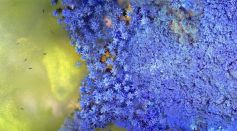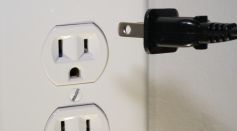ENVIRONMENT & CLIMATE

LEGO Bricks as an Alternative Thermal Insulator for Dilution Refrigerators? Find Out [VIDEO]!

North American Coyotes and Crab-Eating Foxes Are Moving to South America and We Should Be Alarmed

The TOXMAP Database Has Disappeared and Researchers Say That It's a Violation to EPCRA

Anopheles Mosquitoes Are More Resistant to Insecticides Thanks to Proteins Found in Their Legs

Balloon Releases Are Killing Wildlife

Animal and Plants in the Ghetto: How Rare Species Organize Groups to Survive

Malnutrition and Obesity Are Now Inseparable, According to a New Report
Ancient Specks of Dust Hints At Possible Scenarios of How the Earth's Atmosphere Changed

8 Top Tips for Making Your Home Eco-Friendly

Surviving Blizzard 2019: What to do When you are Outside

How NASA Evolved When It Entered a Partnership With the Private Sector

Effects of Climate Change On Birth Rates: Increasing Cardiovascular Stress, Study Finds

It's Getting Hot in Here!: 5 Ways to Help Lessen Our Carbon Footprint in 2020

A 5,700 Year Old Chewing Gum Helped Scientists Reconstruct Entire Genome of a Woman
Most Popular

Will Earth's Magnetic Poles Flip Next? Magnetic Pole Reversal Explained Through Cutting‑Edge Magnetosphere Science

Relativity Time Dilation Explained: The Physics of Time and Why It Moves Differently in Space

How Lightning Science Reveals Why Charged Storms Are Rising with Global Warming Effects

De-Extinction vs. Conservation Science: Which Approach Protects Biodiversity Most Effectively?





